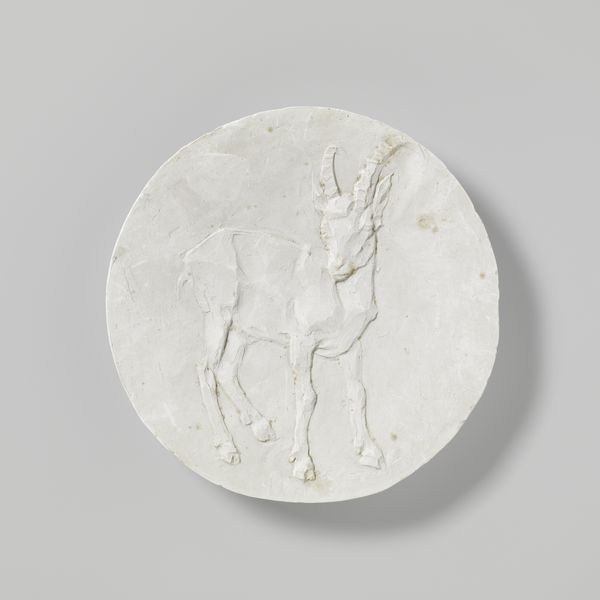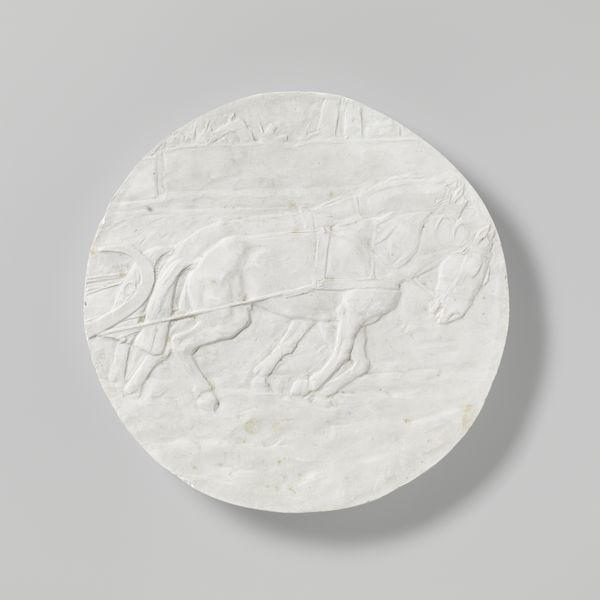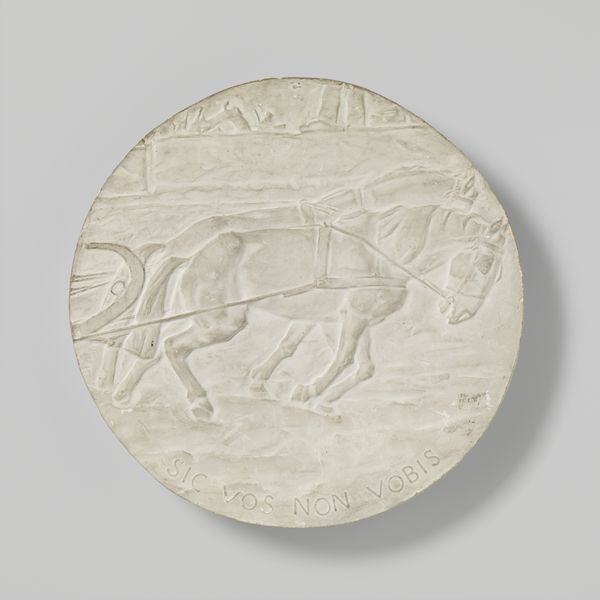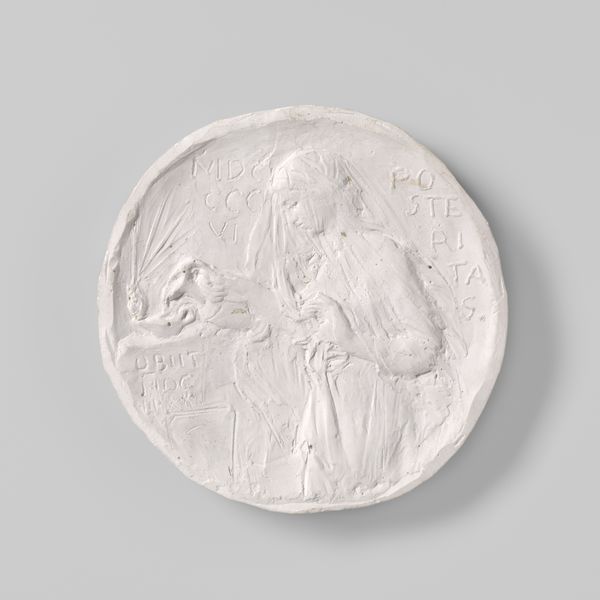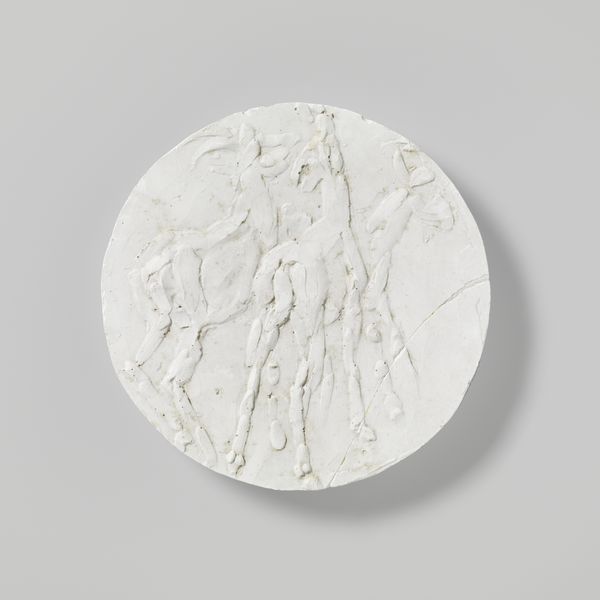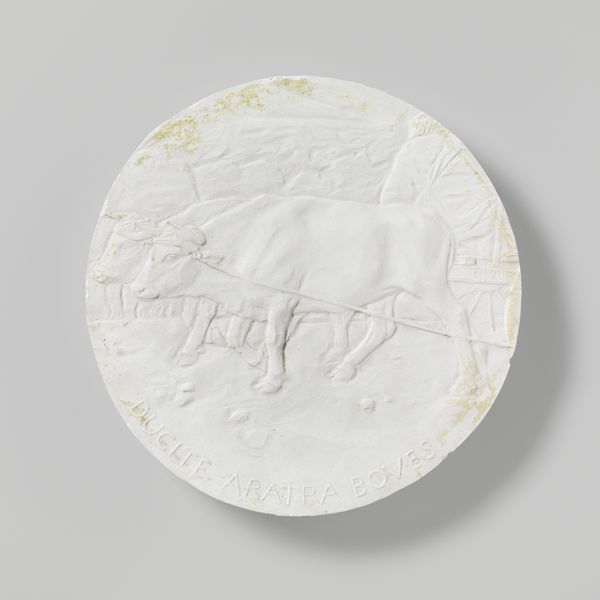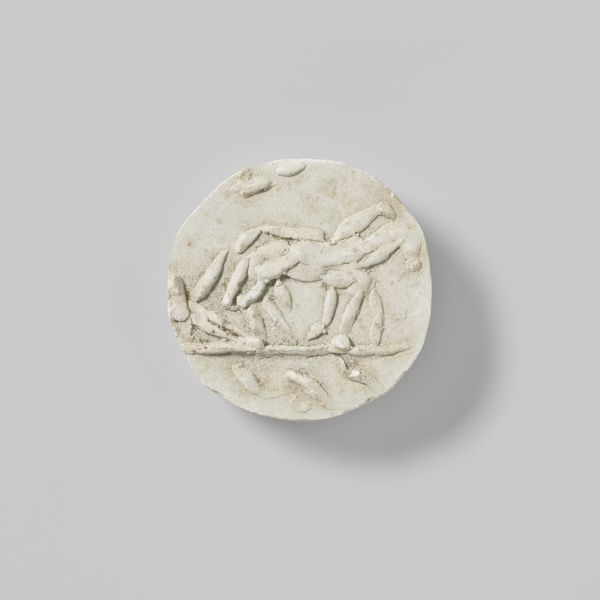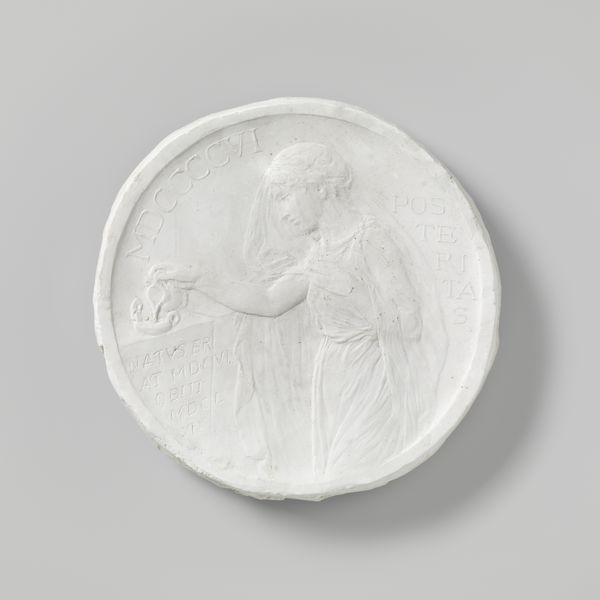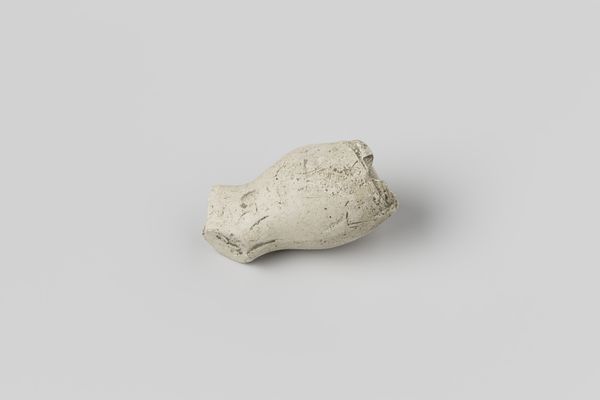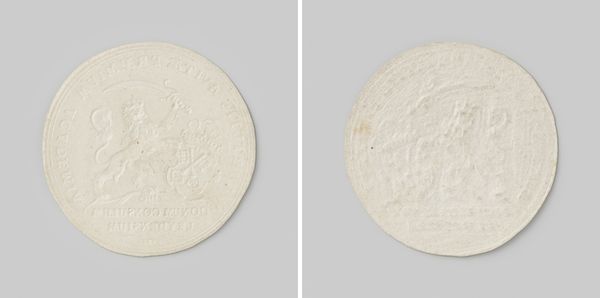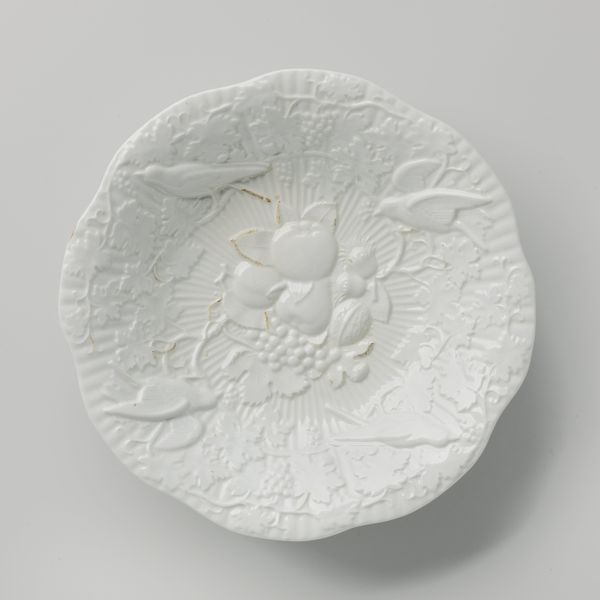
relief, sculpture, plaster
#
portrait
#
animal
#
relief
#
figuration
#
form
#
sculpture
#
plaster
#
ceramic
#
academic-art
Copyright: Rijks Museum: Open Domain
Curator: This intriguing artwork is a plaster relief entitled "Reliëf van gips met twee paarden," or "Plaster Relief with Two Horses," attributed to Lambertus Zijl and created sometime between 1876 and 1947. Editor: My immediate impression is one of understated power. The monochrome plaster and the simple, almost classical composition, give it a sense of timelessness, though somewhat eroded. Curator: The choice of plaster is interesting, especially given the timeframe. It would be pertinent to consider Zijl’s access to materials, the patronage system, and the economics that might have favored plaster over more permanent materials like bronze or marble in certain commissions. How did material constraints shape his artistic vision? Editor: Plaster's accessibility probably also made it more feasible to create a piece like this in a specific political climate. A public art initiative perhaps? Or a piece intended for a particular demographic or social group that might have valued accessible art? The scale implies domestic display more than grand civic placement. Curator: Exactly, and that ties into Zijl's production practices. Plaster, easily molded and replicated, speaks to a possible desire to circulate images of power and grace to a wider audience, making art a more democratic experience and potentially transforming how such objects were viewed and received. Editor: There's a certain academic feel to it. The horses are well-rendered in terms of form and musculature. What was the place of academic art during Zijl's time, how did his sculpture fit into it and was it a critique or adoption of its styles? Curator: The interplay between material and subject is significant. Plaster's fragility contrasts sharply with the robust musculature of the horses depicted, perhaps acting as a subtle commentary on the fleeting nature of power or the idealized image of the animal. Editor: Right, and the very fact that the piece survived at all – considering the temporal, perhaps social, factors involved with the use of the materials. I appreciate how our differing angles reveal the social and tactile life of the object itself.
Comments
No comments
Be the first to comment and join the conversation on the ultimate creative platform.
